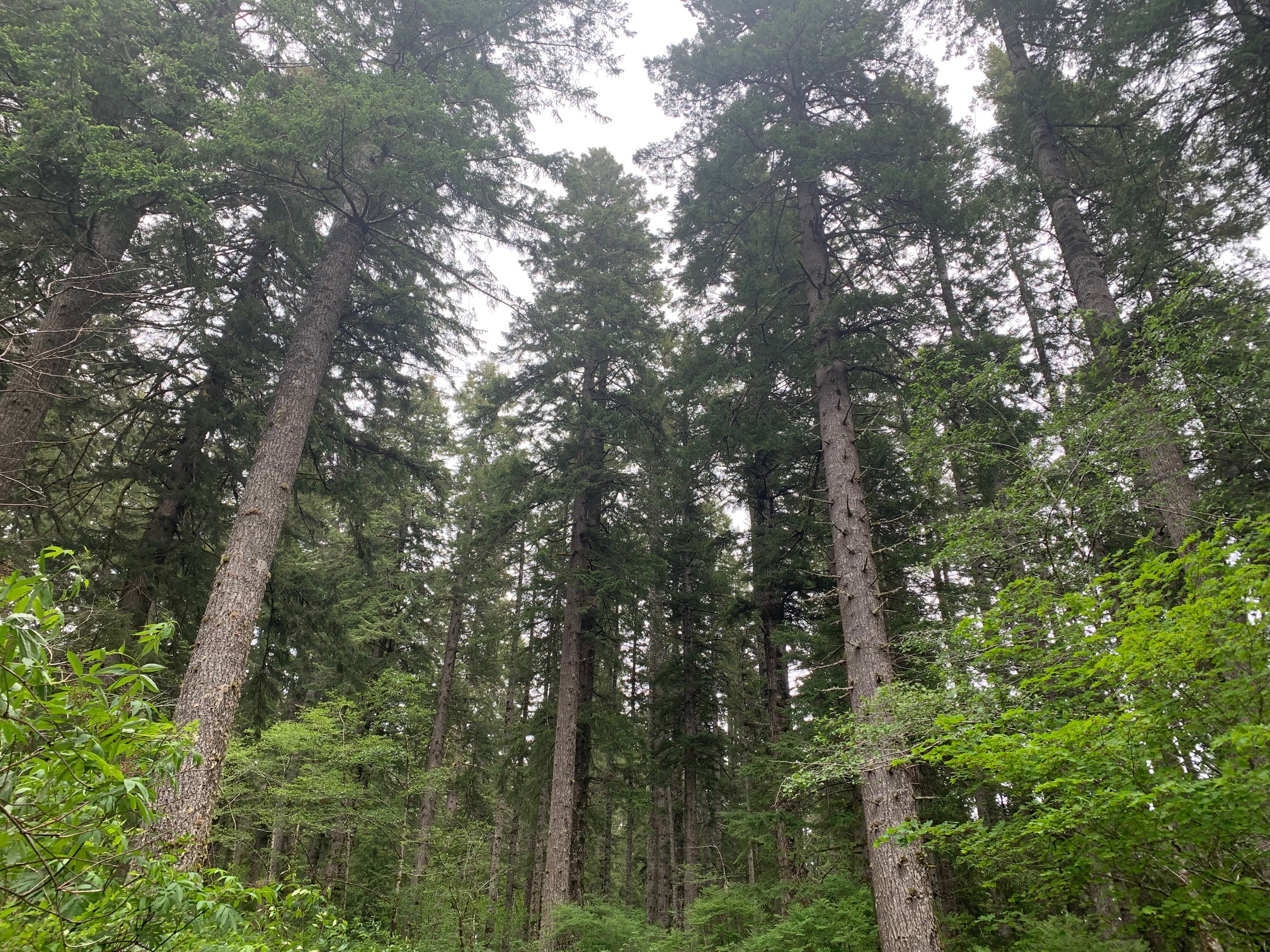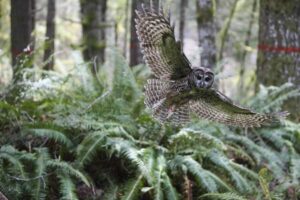
By ZACH URNESS/Salem Statesman Journal
The U.S. Forest Service has released its long-awaited proposal to update the landmark Northwest Forest Plan, but many groups said they were unsure of its future with a new administration coming to power in 2025.
The document, which has been years in the making, lays out four alternatives for future management of national forests in Washington, Oregon and California by updating a 1994 law crafted by the Clinton administration. The 630,000-acre Siuslaw National Forest along the central Oregon coast would be heavily affected by any decisions laid out in a final plan.
A 120-day public comment period begins now, which the agency says will help shape a final plan, anticipated for 2025.
“Much has changed in society and science since the Northwest Forest Plan was created nearly 30 years ago,” said Jacque Buchanan, regional forester for the Forest Service’s Pacific Northwest Region. “We’re amending the plan to address today’s challenges in ways that honor the plan’s original goals, while adapting to changing conditions and enhancing wildfire resilience.”
While each alternative aims to reduce wildfires, address climate change and work more closely with tribes — elements that were not part of the original plan — there are differences among the alternatives in terms of how much logging or forest management is allowed on the 24.5 million acres of federally managed forest.

Environmental groups, some of whom helped drive creation of the original Northwest Forest Plan in response to the loss of old-growth forest and decline of the spotted owl, expressed concern about the plan’s future given a second Trump administration would likely seek a more aggressive approach toward timber harvest.
“For nearly three decades, the Northwest Forest Plan has protected Pacific Northwest wildlife, clean water, and old-growth forests,” said Steve Pedery, conservation director for the environmental group Oregon Wild. “It is deeply troubling for the Forest Service to propose such enormous changes to this vital environmental protection plan at this time, just before a change in presidential administrations.”
The American Forest Resource Council, a trade group for timber producers that worked on an advisory panel for creation of the proposal, said the process represented a careful negotiation.
“Ultimately, we want to see a modern approach to federal forest stewardship that protects us from catastrophic wildfires, reduces toxic smoke, meaningfully engages Tribes, and delivers for our rural communities and workers,” said AFRC president Travis Joseph.
The full document can be read at tinyurl.com/2uutzs5d. A place to submit public comment can be found at tinyurl.com/26mpx3aa.
The alternatives
Here’s a brief breakdown of the proposed alternatives.
Alternative A (no action alternative): This action would leave the national forest plans essentially as they are now. “The 1994 NWFP would not be amended, and the 17 affected national forests would each continue to be managed in accordance with the plan direction in their existing land management plans.”
Alternative B (committee recommendation): This plan came from recommendations developed by a federal advisory committee that “brought together diverse perspectives” to provide input. The plan is presented as a compromise between groups calling for more active forest management and those wanting to maintain current levels of protection on Northwest forests.
It would alter the original Northwest Forest Plan in a few ways. It would create a “new approach to tribal inclusion” and “move beyond consultation with Tribes and include specific, actionable strategies to incorporate Indigenous knowledge in decision making and provide opportunities to expand co-stewardship with Tribes.”
In addition, the plan would seek to conserve and recruit mature and old-growth forest conditions, restore ecosystem resilience to wildfire made worse by climate change and provide a predictable supply of timber to “support community sustainability,” the plan said.
The plan would prioritize reducing wildfire risk in areas that affect communities and infrastructure, seek to adapt to climate change and “establish desired conditions for carbon stewardship for both dry and moist forests.”
It would also seek “to improve the consistency and reliability of timber harvest and forest restoration and resiliency projects that support local job opportunities, businesses, and economies.”
Alternative C (less logging, more natural processes): This alternative was developed in response to public comments supporting emphasis on natural processes for forest management. Pedery said it was the best alternative to focus on what the Northwest Forest Plan was supposed to do, which is “recover mature and old-growth habitat for threatened and endangered species.”
“To this end, Alternative C would employ more restrictive limits on the use of commercial timber logging for vegetation management and ecological restoration and would reduce active forest management relative to Alternative B,” the plan said.
Alternative D (more forest management): This alternative responds to public comments supporting more forest management to reduce wildfires and increase “predictability of timber outputs,” the plan said.
The plan would give “more flexibility in forest management activities,” including additional fuels treatment and more flexibility for dry forest restoration treatments, among other activities. It’s a plan that more closely reflects the idea that more aggressive and active forest management is needed to limit wildfires while also providing logs to local mills.
- Zach Urness has been an outdoors reporter in Oregon for 16 years and is host of the Explore Oregon Podcast. He can be reached at zurness@StatesmanJournal.com or (503) 399-6801. Find him on X at @ZachsORoutdoors.
-
To read YachatsNews story from June about the Northwest Plan and the Siuslaw National Forest, go here





















I have to marvel at human arrogance that insists “forests must be managed” rather than stewarded and protected. The American Forest Resource Council represents the profit driven needs of extractive industries. “Management” to them means extraction along with greenwashing language designed to mislead people as to the amount of habitat, soil, watershed, and carbon retention they jeopardize in the forest. An alternative can be found in the impressive work of Professor Suzanne Simard and her graduate students at https://mothertreeproject.org/ Old growth trees are vital to staving off fire hazards and nourishing young and mature growth surrounding them. The monoculture of tree farms eventually wear down the rich mycorrhizal soil networks that can hold more than 40% of forest carbon, but not if forests are clear cut and then poisoned with the variety of herbicides used in modern timber practices. The forest plan must include the new and important work of Simard and her team and others like: https://www.woodwellclimate.org/research-area/carbon/. For an enlightening look at Simard’s work check out Nate Hagens at https://youtu.be/l1jKOMP7g_c?si=lUtVGTikiEVODuJ1
Amen! The timber industry in this state has been getting away with ecocide for way too many decades. The research cited above is only a small fraction of studies showing how monocultural tree farms, clear cutting and pesticide use decrease species diversity and overall ecosystem health.
This just popped up in my newsfeed. It’s from Forest Service employees (& others) who disagree with the director’s approach to old growth forests. It’s a stunning read, much like rank and file union members rising up to disagree with union management. This is a paradigm shift.
https://nationalforestadvocates.org/analysis-recommends-limits-on-old-growth-logging/
Thanks John for your always detailed and insightful comments. You always help us newbies wade through the tons of euphemistic BS!